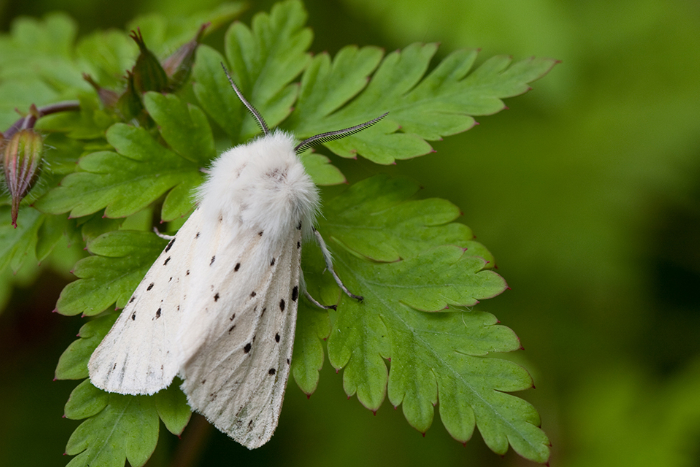
The moth invaders
By Rachel Shaw
Lincolnshire Wildlife Trust
While sitting outside to enjoy the last rays of the sun I spotted a moth.
It was distinctive but I didn’t recognise the species. Its large white wings had a pearlescent quality bordered with a band of slate grey.
I grabbed my phone to try to get a photo. When it landed, it flipped upside down and perched out of view on the underside of a leaf. I attempted to gently move the vegetation. That upset the moth and it fluttered away. It landed again so I crept closer and tried to peer under the leaf where it had come to rest. The moth fluttered away. A photo was impossible.
There may be countless apps and online groups that can help with identification but this moth had me reaching for the bookshelf. There is still place for an old-fashioned identification guide or so I thought.
I leafed through my guide hoping to spot the species but to no avail. My book only includes a small sample of the more than 2,500 species of moth in the UK. So perhaps I shouldn’t have been surprised that none of the illustrations matched what I'd seen.
Before the features of the moth faded in my memory, I started to idly google moths with black and white colouring. A few species that I recognised popped up. The magpie moth with its spotted pattern and yellow tints. The white ermine with tiny black dots and a furry white collar. The black arches with markings like lines of ink. It wasn't any of those.
I stopped scrolling. There it was, I was sure. I stopped on an image of the moth I had seen. I tapped on the link. It took me to the website of Butterfly Conservation; a very reputable source of information. The moth was a box-tree moth. My heart sank a little as I read.
The box-tree moth was first recorded in the UK in 2007. Originally from south-east Asia, it probably arrived in the UK with imported box plants. The bad news for gardeners is that the caterpillars feed on the leaves of various species of box. Their voracious appetite can completely defoliate the plants.
When I first saw this moth; looking delicate with its pearly iridescence, I thought this column would be about the wonder of moths.
Hidden from view for most of the time but as colourful and diverse as the more celebrated butterflies. And as important as pollinators and for their role in the ecosystem, for example as food for bats. Instead, it’s about the consequences of our actions. How we’ve disrupted ecosystems and the climate.
The box-tree moth is just one example of a pest or disease that has moved across continents with the transportation of live plants.
Ash dieback is another - with all to visible consequences. Once here, our milder winters are helping them spread. In the past, they may not have survived day after day of below-freezing temperatures, now they thrive. Since the first report of box-tree moth in Kent, it has spread across the UK and as far north as Scotland.
The simple sighting of an unusual moth draws into sharp focus the urgent need nature’s recovery and the necessity to work with nature rather than against it.
Vaughn Matthews’ pictures show (above) a magpie moth and (below) a white ermine moth.

